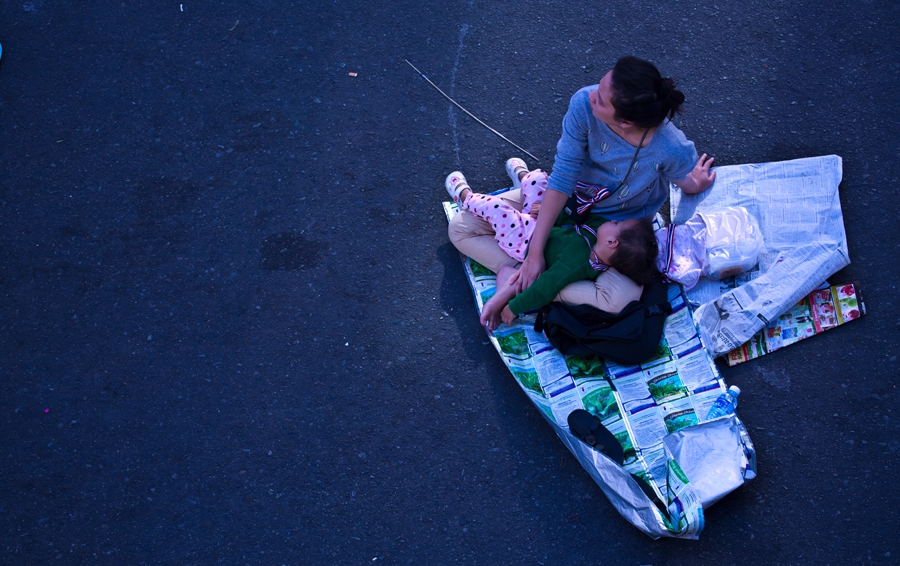Born in the inland city of Changsha, Zhou Tao currently lives and works in China’s third largest city Guangzhou, where he got his BFA degree in oil painting and MFA in mixed media studies from the Guangzhou Academy of Fine Arts. Since 2003 he has mainly worked with video. His art transforms real surroundings into a theatre, subject to a series of invented plotless events that are rooted in physical senses, evoked by environments and time, and expressed in a seemingly documentary language.
Zhou’s earlier works were usually body-based performances that explored human behaviour in public or private spaces. In Power Here (2008), he successfully ran four household appliances – an electronic fan, an infrared heater, a speaker and a floor lamp – on electric power obtained from various public facilities (such as traffic lights and streetlamps), and then in the exhibition space, showed video recordings of these events on monitors powered in the same way: obtaining power directly from the gallery facilities (rather than plugging them into power sockets). In Time in New York (2009), he puts a ball of string into his hip pocket, which unwinds as he moves around his apartment (and tacks it to walls, etc to leave a ‘map’ of his activities) until the string runs out and the apartment is home to the labyrinthine structure it created.
In his latest works, Zhou uses editing techniques to combine footage of two spaces into one – for example, in Blue and Red (2014), public squares in Guangzhou and in Bangkok, or in After Reality (2013), wastelands in Guangzhou and in Paris – and thus creates a third space where a fictional narrative unfolds. In this new, unidentified space, Zhou’s camera starts to ‘write’ from an uncertain spot, eventually describing a new, unpredictable event that the artist describes as a ‘moving image occurrence’ – something generated by the moving image itself. Meanwhile, the intervention into that fictional space is some moderated performance normally developed from his observation on the living creatures (or traces of them) in those environments, such as animals (the elephant in Collector, 2012), inanimate objects (human waste floating in the river in South Stone, 2010–11) and human beings (Dragon Boat rowers training on the river in After Reality). In Blue and Red, a series of lowangle shots show people in the respective public squares stained with a blue ray refracted from nowhere, the earth’s crust appears like a human skin and a series of tents appears like an epidermis under a microscope. As time goes by, a weird and nearly sexy feel arises in the viewer’s mind: as if what the artist terms this ‘epidermal touch’ has become a physical sensation.
In addition to performance (space intervention) and video recording (visual writing), Zhou also drills into the space he works on for what he calls the ‘volume of time’ via painting, photography and writing. All these practices have formed an undivided whole, expressing the core of Zhou’s art: the sense and sensation of time.
Originally published in the Autumn & Winter 2014 issue of ArtReview Asia, in association with EFG International.
